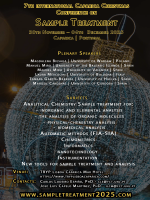A study of SARS-CoV-2 genomic profiles, evolutionary changes, and transmission dynamics in Southeastern India during three pandemic waves
DOI:
https://doi.org/10.5584/jiomics.v15i2.239Keywords:
SARS-CoV-2, Genome surveillance, Non-structural proteins, SARS-CoV-2 variants, SARS-CoV-2 lineagesAbstract
SARS-CoV-2 bio-surveillance at all levels is crucial for understanding its genetic evolution and vaccine effectiveness.This study investigated the emergence and evolution of new SARS-CoV-2 variants in the city of Puducherry, India throughout the three peaks of infection. A total of 128 samples were subjected to Illumina deep RNA sequencing. The results indicate that the first wave was dominated by uncommon variants, the second by Delta, and the third by Omicron. Lineages B.1.560 and B.1.617.2 were most prevalent. Analysis of 3133 common and 11 new mutations revealed Spike_D614G as the most common mutation and a novel set of mutations was observed in NS16, a key immune evasion factor. These NS16 mutations raise concerns about increased virulence, reduced vaccine efficacy, and potential antiviral resistance, warranting further investigation. Our findings contribute to SARS-CoV-2 evolutionary and genetic epidemiology research and highlight the need for ongoing surveillance to anticipate future variant threats.
Downloads
Additional Files
Published
Issue
Section
License
Copyright (c) 2025 Journal of Integrated OMICS

This work is licensed under a Creative Commons Attribution 4.0 International License.








